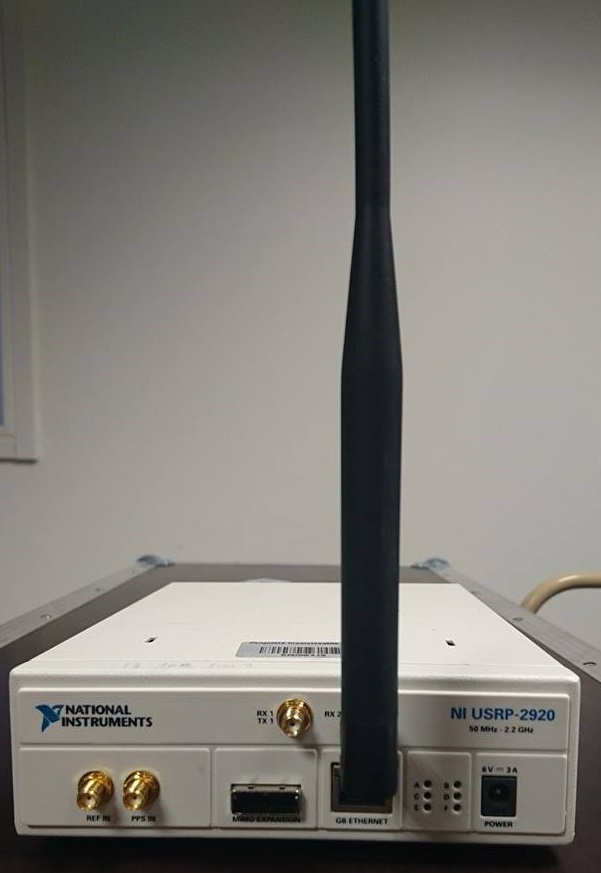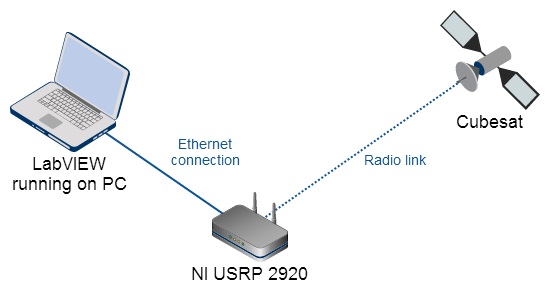Equipment¶
Hardware¶
- NI USRP-2920: National Instruments Universal Software Radio Peripheral

Figure 1: NI USRP 2920
The USRP can receive analog signals from a range of center frequency of 50 MHz up to 2.2 GHz, covering the ISM, FM radio, GPS, GSM and radar bands. It can therefore receive signals at the frequency of our emitter which is 434 Mhz in the ISM band and pass it through the computer.
- PC running with labview with a gigabit ethernet connection. The set up is the following:

Figure 2: Set up of the receiver
The computer gets the data from the USRP via the ethernet connection.
Software¶
- NI Labview 2015
The software that was used for the implementation is Labview 2015 from National Instruments. Labview 2015 and its extensions can be downloaded from the National Instrument Website. This software allows a platform-based approach and enables to develop with a graphical interface. In this language, data is represented by wires and it is processed by functions represented by blocks wich contain input and output interfaces. By linking the wires to the input or output of a functions we can code the processing of a data. What is very handy with Labview is that we can visualize the data while the program is running. Furthemore, it contains a lot of libraries that enable to process RF signals, get the bits and convert them into integers.
- NI USRP Driver
After downloading Labview, we downloaded the NI USRP driver to get all the libraries and vi needed to operate the USRP.
- NI Modulation toolkit
Finally, we used the Modulation toolkit in order to have the necessary libraries to process our signal. You need to download it if you want to run this receiver.
You can download all those softwares on the National Instruments website: http://www.ni.com/fr-fr.html
